
If you’re ready to sell your home, you don’t need to wait until the spring just because that’s the more popular time. There are plenty of benefits to selling in the off season, even a few that can be monetary. Here are our top 5 reasons for why winter is a good time to sell your home.
Low Inventory means Less Competition
Since spring is the most popular season to sell a home, that means the housing market is packed with plenty of houses for buyers to choose from. When the market slows down in the winter, your home will be one among a few. This gives you the opportunity to not only sell your home faster, but also to sell above your asking price because buyers will be competing against each other over the low inventory.

Year-end Bonuses
Many potential buyers have been waiting to purchase a home or upgrade until they have enough money saved. Year-end bonuses and other financial payouts could have provided them with the down payment they need.
Motivated Buyers
With the ability to house-hunt online, cold weather will keep people inside. If you have potential buyers attend your open house, it’s safe to assume they are serious about purchasing. This means you will waste less time on buyers who aren’t ready to pull the trigger and are ‘just looking’ to see what’s out there. These motivated buyers are more likely to be pre-approved and can put down a serious offer.
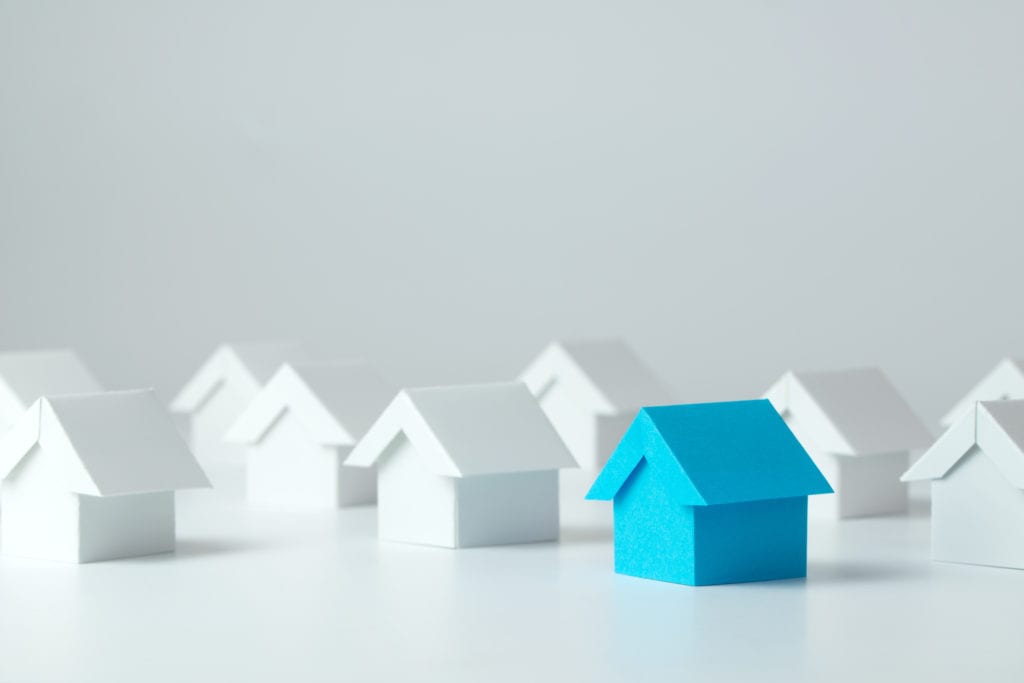
Relocation
Early winter is the most popular time for companies to do corporate relocation. Some buyers might be moving for a job and need to find a home quickly. Therefore, they don’t have the luxury to take their time when house-hunting. If they find a home that meets their requirements, they will be ready to buy right away.
Landscaping
Depending on where you live, you might experience typical winter weather – lots of snow. While it might not be fun to deal with, it can help you by keeping your landscaping maintenance to a minimum while trying to sell. Just make sure your drive/walk-ways are clear and safe to walk on. The harsh weather also allows potential buyers to see how your home handles it. Whether the snow has accumulated or is melting away, buyers can look for any potential issues they might not have seen if buying in later months.
Bonus: You can light up the fireplace!
Don’t let group mentality get the best of you and make you feel as if you must wait until the spring to sell your home. Take advantage of the slower season and reap the rewards that may come. Keep these 5 reasons in mind when weighing the pros and cons or evaluating the circumstances of why you need to sell.
If you have any questions or want more information about the home selling process, contact one of our licensed Mortgage Loan Originators. If you are ready to begin the home buying process, click here to get started!
Whether it’s time to down/up-size or your job requires you to move, buying a new house can be exciting. However, that doesn’t mean selling your current home will be easy. You might not realize how strong your emotional connection really is until you start the home selling process. Here are a few ways to help you handle the emotions of selling your home.
It is important to make sure you are 100% ready to move. Therefore, you should start preparing for the emotional side of home selling before your home hits the market. The earlier you start to work through your feelings, the smoother the process will be. This will allow you to evaluate your feelings and potentially realize that maybe you aren’t ready. The last thing you want is to do is get to closing and change your mind. Remind yourself of the reasons you have chosen to sell your home. Has your family outgrown the space, are you following a job, or is it time to downsize? Whatever it may be, you decided it was time to move on for a reason.
After accepting why you need to move, take some time to grieve. You are leaving a home full of memories. It is sad you might be leaving the first place you bought with your spouse or the place your child took their first steps, but it is important that you look beyond those memories and try to detach yourself. It will be a lot easier for you to sell a house, rather than a home. Removing your family pictures and other personal mementos will make it seem less like home to you and will allow potential buyers to more easily picture themselves in the house.
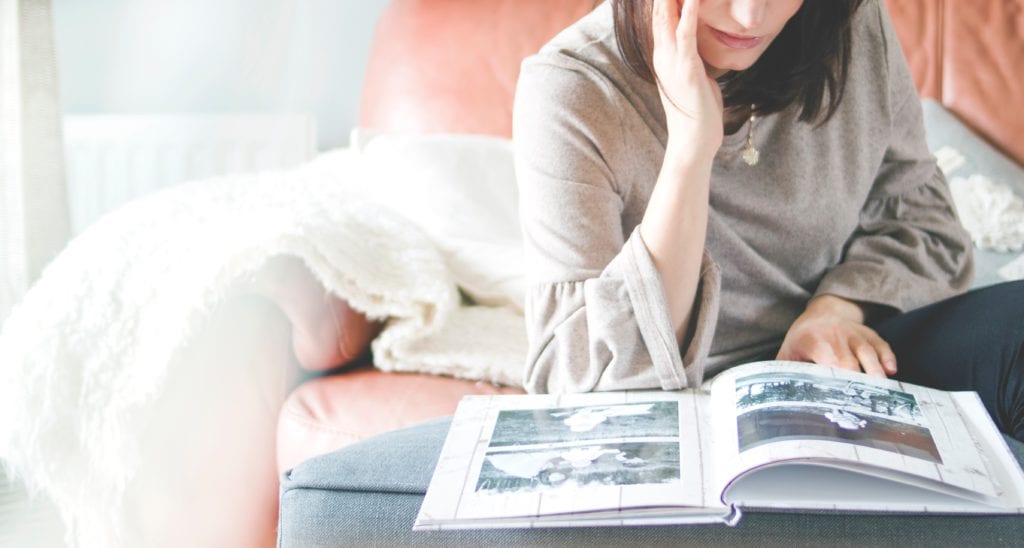
Prepare yourself for your life to become a lot more hectic. You will find your schedule changing to accommodate open houses, as well as having to keep on top of keeping everything clean and tidy. The housing market can be unpredictable, so there is no telling how long you will have to keep this up before your home is sold. It can become tiring but is vital to getting your home sold.
It is recommended that you don’t stick around when your home is open for showings. Not only could it damper the experience for the potential buyers, but it leaves open opportunities for your feelings to be hurt. Potential buyers might not give their honest opinion of the home at the chance they could offend you. On the other hand, if they do, you might not like what you hear and could take it personally. Buyers are there to evaluate your home and have their own ideas of how a house should look. Don’t take offense or be surprised if some buyers nit-pick and are extremely critical of little details. It’s better for everyone if the seller isn’t present.
Overall, don’t be surprised if selling your home has a much larger emotional toll on you than expected. If you are prepared to go through the emotions, you’ll get through and can enjoy the adventure of your new home.
If you have any questions or want more information about the home selling process, contact one of our licensed Mortgage Loan Originators. If you are ready to begin the home buying process, click here to get started!
You only have one chance to make a great first impression and for your home that impression comes from curb appeal. It’s up to you to make your home appealing, so spend the time and money to entice potential buyers to take a further look. Here are 8 ways to add curb appeal to sell your home:
Clean: The first thing you should do to your home is give it a much-needed “bath”. Rent a power washer if you don’t own one or hire a professional. You’d be amazed at the difference a deep cleaning will make to your home. Don’t stop at just the house; clean the porch/deck, walkways and driveway. Getting rid of all the grime will make your home look like a million bucks without having to spend it.
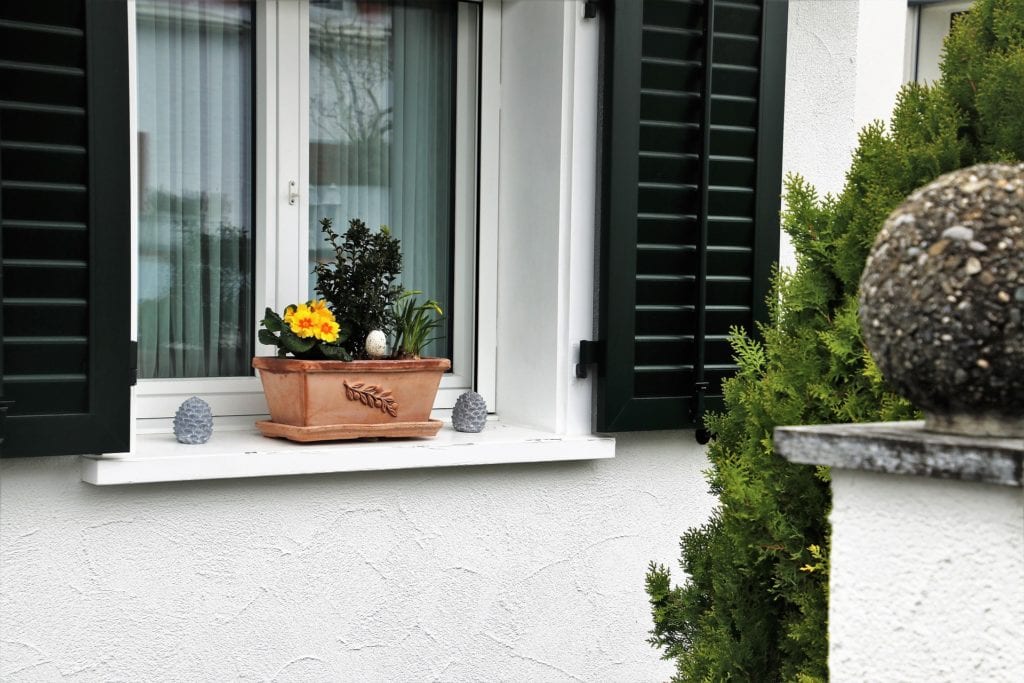
Paint: Now that your home is squeaky clean, you can add a fresh coat of paint. Redoing the entire exterior of your home isn’t necessary, so if you’re working on a budget don’t worry. Instead, focus on painting a couple areas that will stand out. The most eye-catching spots will be your front door, shutters, trim, porch, and mailbox. Painting just these spots will keep the cost of paint down while helping rejuvenate the look of the home.
Update Any Metals: Those outdated light fixtures, rusty house numbers, and ready to fall apart railings have got to go. Start with finding modern light fixtures for your porch and go from there. All metal used around the exterior of your home should remain consistent to tie everything together. Be sure to pick items that match the overall design of your home; the exterior of your home should act as a preview for potential buyers of what they can expect when they walk inside.
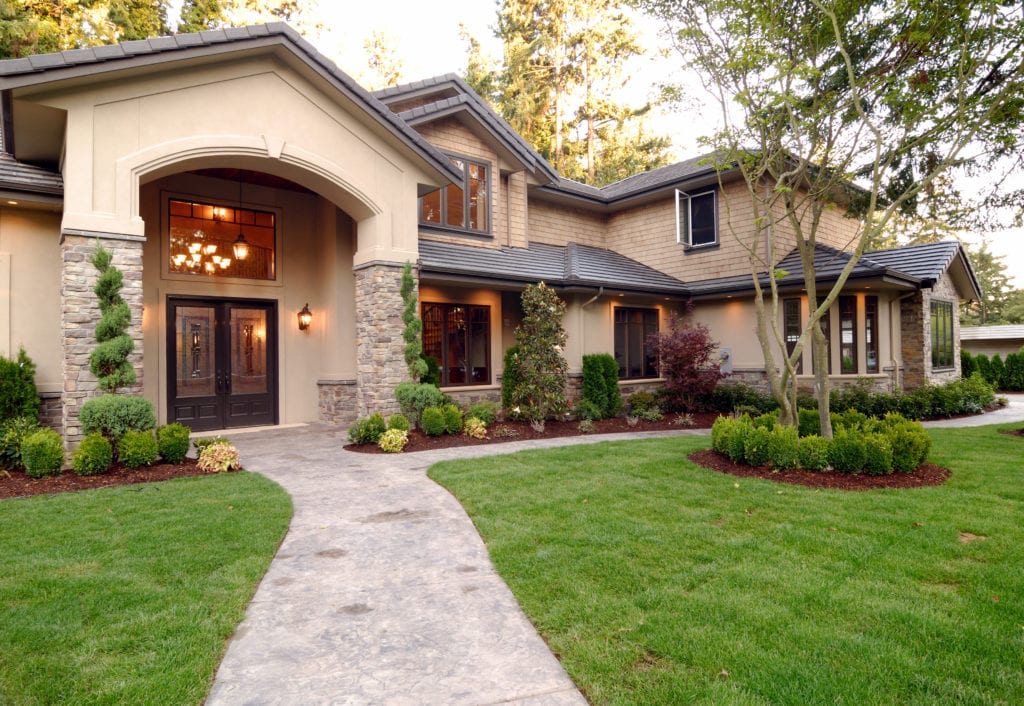
Symmetry: While updating and adding pieces to the front of your home, check for symmetry. Have lighting fixtures or potted plants on each side of your front door. This will not only look inviting but will ultimately make your home more pleasing to the eye.
Add Seating: Having a place to sit will make your home seem more inviting. No matter the size of your porch or backyard, find a piece of furniture that will fit the space. For smaller areas, use a bench or rocking chair. For the backyard, a group of nice chairs or a single loveseat would give the perfect touch. This extends your “living” space outside and potential buyers can imagine themselves sitting around a fire pit, reading a book, or sipping their morning coffee. Add a path to this area and install lights along the way. This will not only make your yard look nice but is good safety feature.
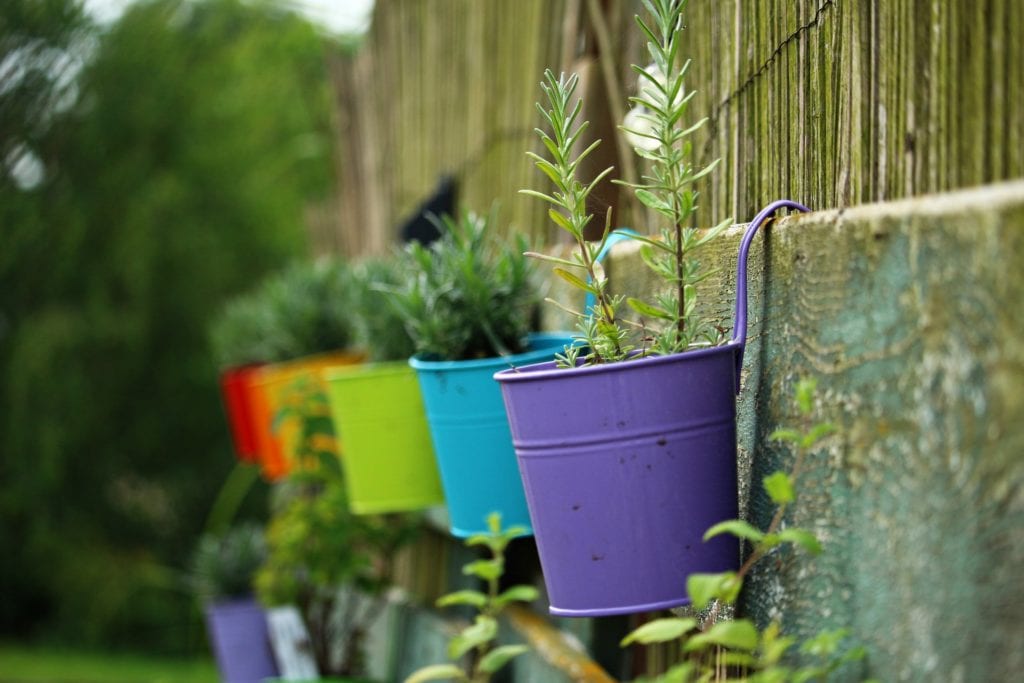
Use Color: If your yard is lacking, use color—especially contrasting—to your advantage. Ditch the same old brown mulch for a brighter red. Find some bright colored pots for your plants and strategically place them around your yard. Use river rocks to create a border between your grass and beds. Dress up your mailbox with a new planter box and some bright flowers to make it really stand out.
Hide Unsightly Items: Remove the ugly from your yard. Garbage cans, recycling bins, AC units, toys and tools will take away from the organized and clean look you want. If you have a shed, put it to good use with what you can. Since you can’t remove your AC unit, try to hide it with well-placed shrubs.
Plants/Trees: If you have the budget, plant new trees, shrubs, or flowers. Make sure you research how big the tree will become before making any decisions. You don’t want something that will become 20 feet tall to be placed too close to your home or have the tree shed acorns all over your pool. Trim the hedges and pick all weeds. You’ll have to keep up with maintaining your yard as you won’t know how long it will take to sell your home.
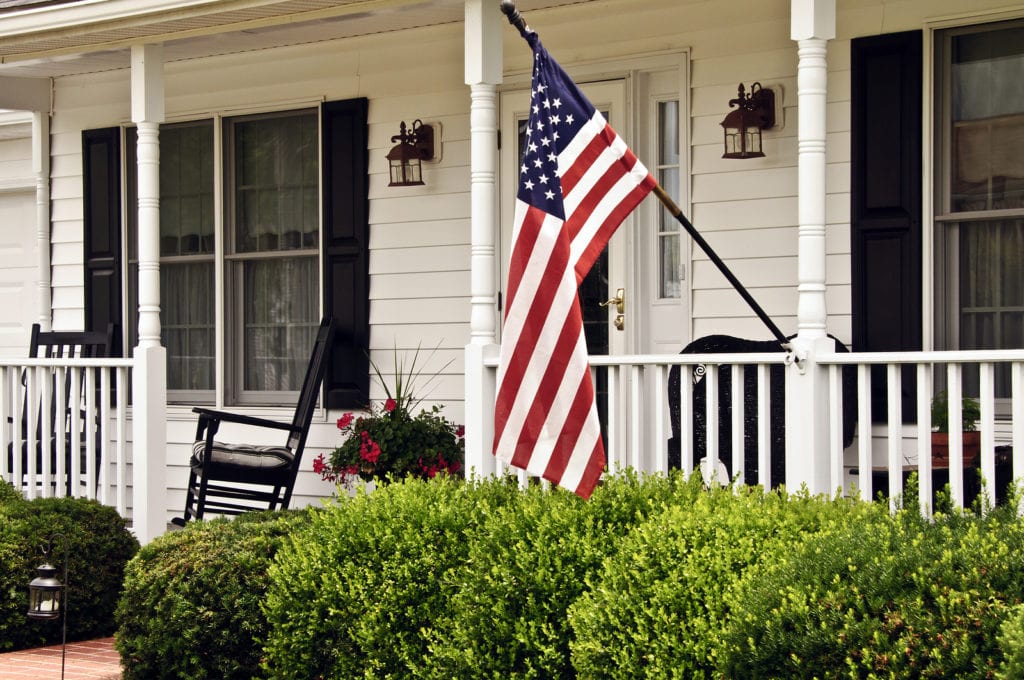
There are endless possibilities to improve your curb appeal without breaking the bank. Choose tasks that you can easily do yourself to cut on costs. Potential buyers want to be drawn into the possibilities of the home, not exactly what you’ve created. If you can entice them to walk through the door, you’ve done your job.
If you have any questions or want more information about the homebuying process, contact one of our licensed Mortgage Loan Originators. If you are ready to begin the process, click here to get started!
‘Staging’ is a term used by real estate agents that means to make your home appealing, therefore making it more marketable to potential buyers. Through this process, you increase your home value and become more emotionally detached from the house as it becomes less of your home. The ultimate goal of staging is to make your house feel like home to potential buyers, so they can easily envision themselves living there. Here are some tips if you are thinking about staging your home for sale.
De-clutter and De-personalize
The first step of staging is to de-clutter and de-personalize your home. Renting a storage space is a great idea. Take out any extraneous furniture so that you can maximize the space your home has to offer. Put away all personal photos and personal items, replacing a few with attractive professional photographs or prints. Furniture should be placed in groupings away from the wall. Not only will this visually create more space, but will also allow for buyers to easily move throughout the room. It is important to make sure every room is being used as it is intended to be. For example, don’t have your dining room set up as an office. Potential buyers often have a difficult time envisioning rooms differently than they appear and will want to see the room staged to meet their expectations.
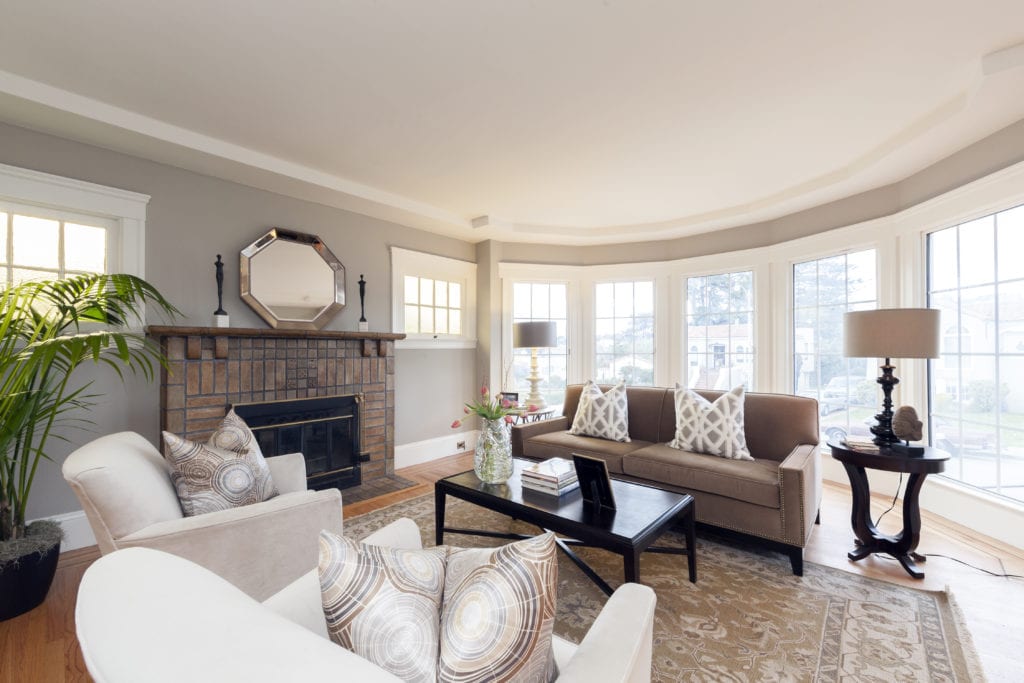
It is important to have a good flow in the house. All hallways and entrances should be clear and traffic flow in rooms should be obvious. Consider putting away area rugs—showing exposed floors sometimes makes rooms appear to be bigger. If there are any built-in appliances, fixtures, or drapery that you would like to keep, remove them now. Buyers can get attached to objects they assume will come with the house and might be turned off from making an offer if they are not.
Before you show your house to potential buyers, it is a good idea to get a home inspection. In most cases, an inspection is going to be done regardless, so having it done before buyers walk through will let them see your home in its best condition. Make any minor repairs needed, such as replacing cracked or missing floorboards, updating some windows, etc. Any repairs you make will be easily paid off once you sell your home.
Ambiance
Paint color is very important when staging a house. White or off-white walls are the general rule of thumb as they create an illusion of open space and make the rooms appear as a blank canvas. Neutral colors are also great choices. Neutral include colors from nature, so think of a muted green or blue. If you want to make your home look even more spacious, paint adjacent rooms the same color. Having the color of the walls match the color of the drapes is also a great technique and makes for a seamless interior look. Darker colors can often make rooms look especially cozy, so don’t shy away from these in your bedrooms and powder rooms. If sticking with an all-white or neutral palette, considering using an accent color to give a room little bit of personality. Small pops of color will keep the room from feeling boring.
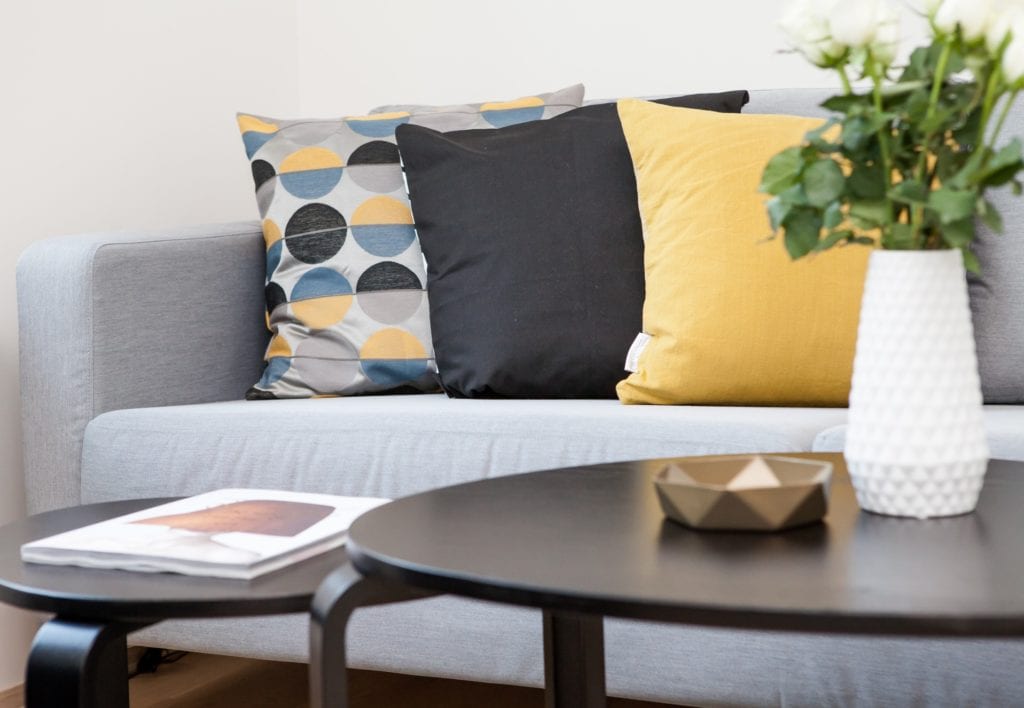
Lighting is of upmost importance during a house showing. Make sure all lights are on when showing your house and open blinds to let in as much natural light as possible. Pay attention to the lighting of each room individually. There should be three types of light in each—ambient lighting (overhead or general lighting), task lighting (under the cabinet, closet, or reading lights), and accent lighting (table or wall lamps). If the room is dark, mirrors are your best friend. Adding a large mirror or two will increase the amount of light and will even add depth to make the room feel bigger.
When staging your home, pay close attention to odors you may be releasing into the house. It is hard for people who live in a house to smell pet or smoke odors since they have become desensitized to them. Have your pets stay at a friend or family member’s house during this time, if possible. If there is a smoker who lives in the house, have them smoke outside. Don’t try to mask odors by burning scented candles or spraying air freshener—these smells can be equally as offensive as the odors can combine rather than be replaced. Get rid of odors at the source—scrub down the house, take out trash regularly, and don’t cook foods with strong odors.
As a finishing touch to your home’s ambiance, place freshly cut flowers or trimmings around the house. Not only are flowers visually appeasing, they will add a nice aroma to the air. If flowers aren’t in season, you can always create bouquets of holly, berries, and pine in the winter and branches with fall foliage in autumn.
Kitchen
Kitchens are perhaps the most important room that buyers look at when purchasing a house. Before you sell your house, update any outdated appliances. Even though appliances are a large expense, it is likely you will recoup every penny spent after selling. If you can’t afford to replace outdated cabinetry, invest in new doors, drawer faces, and knobs. Store away counter appliances like toasters and coffee makers and make sure your refrigerator is free of magnets and personal reminders. Remember, you want to make your home look as if it brand new and uninhabited.
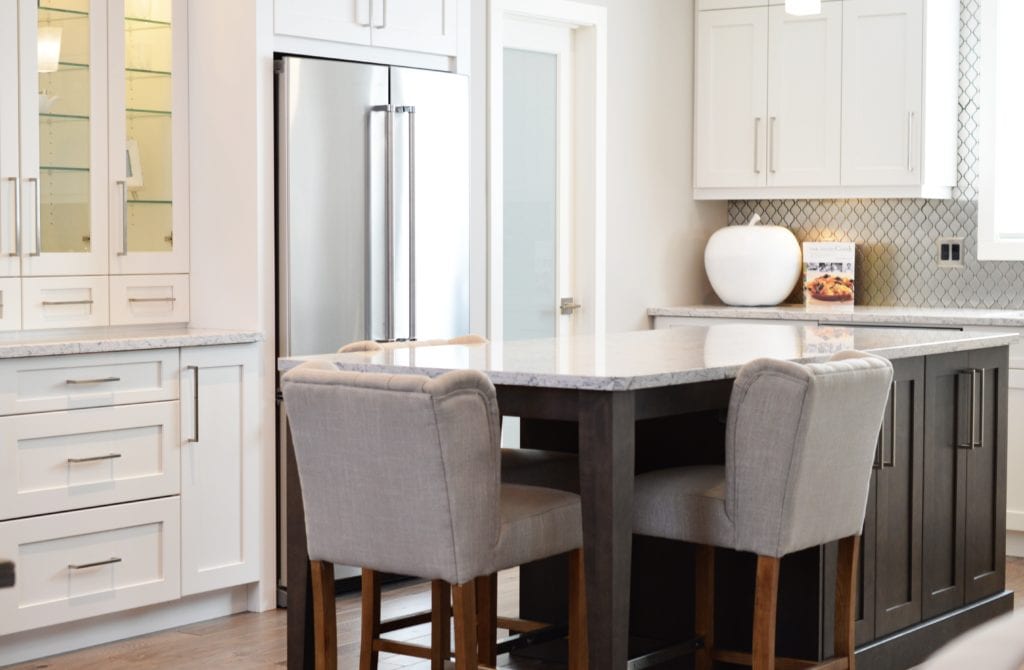
Bathroom
When staging a bathroom, your goal is to make it look and feel spa-like. Remove your personal items, such used bars of soap, razors, and toothbrushes. Make sure your cabinets are clean, uncluttered, and presentable as buyers like to check out the available storage space. Use white linens to add a sense of elegance. Put out accessories like fresh rolled-up towels, baskets, and candles to complete the spa-like atmosphere. The goal is to create an oasis the buyer doesn’t want to leave.

Bedroom
Make sure the room is free of clutter and clothes. You want the bedroom to come across as a room that is only used for rest and relaxation and has an inviting atmosphere. Again, use fresh white linens and puffy pillows to give an air of luxury. Pay close attention to your closets as buyers will be sure to look. To make them look the most spacious, remove your belongings. If you can’t, keep everything clean and organized.
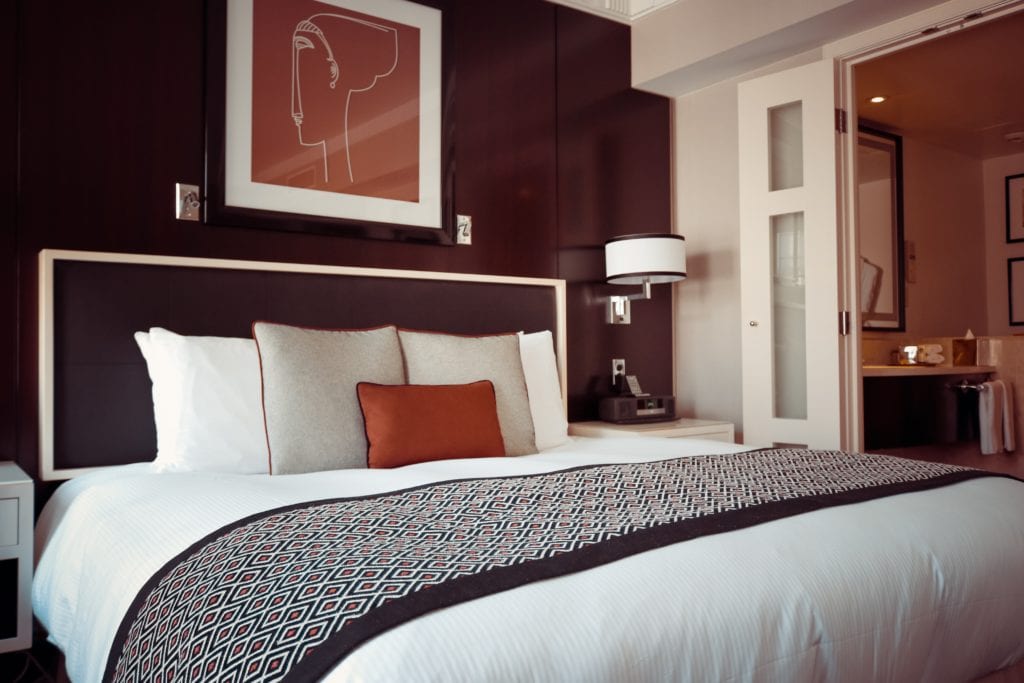
Curb Appeal
The exterior of a home is often the most important visual element of selling a house. This is where the buyer gets their first (and often lasting) impression of a house. Check that the house numbers are clearly visible from the street. Clear all sidewalks and driveways around the house. Make sure any cracks in the pavement are repaired. Your lawn should be well-kept and mowed and all leaves should be raked away. Trim shrubs and see that the gardens are properly weeded. When choosing a color for the front door pretty much anything goes, but try to aim for contrast. Pick a nice, bold color that will stand out from the rest of the house.
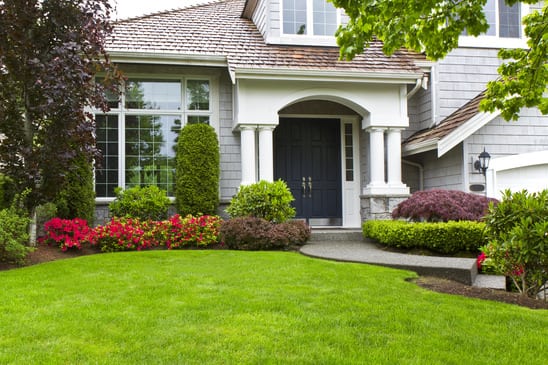
Staging Completion
The day of showing, make sure you stash away all personal items and empty wastebaskets and trash. It is also a great idea to leave the house before the buyers arrive. Following these steps should ensure that your house sells quickly and with great value. Once your house is sold, be sure to use our moving tips to help for a smooth transition to your new home. Good luck!
This blog was originally published in January 2013 and has been updated to reflect current trends.